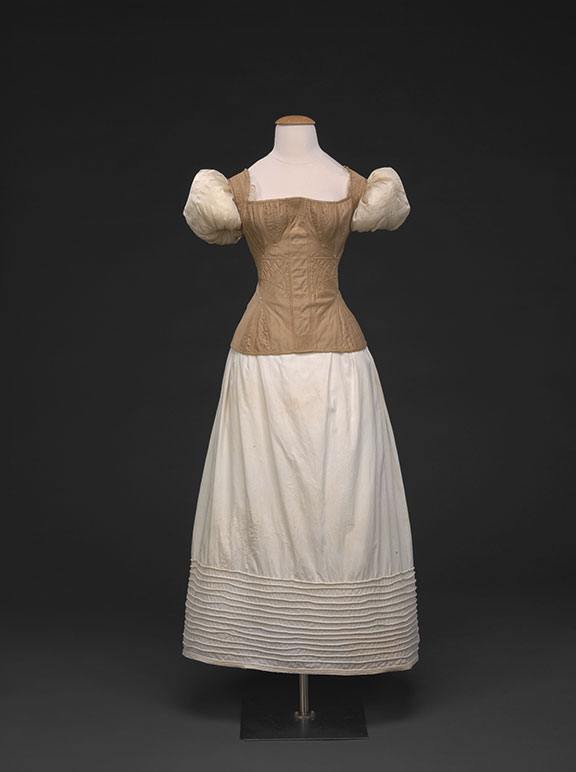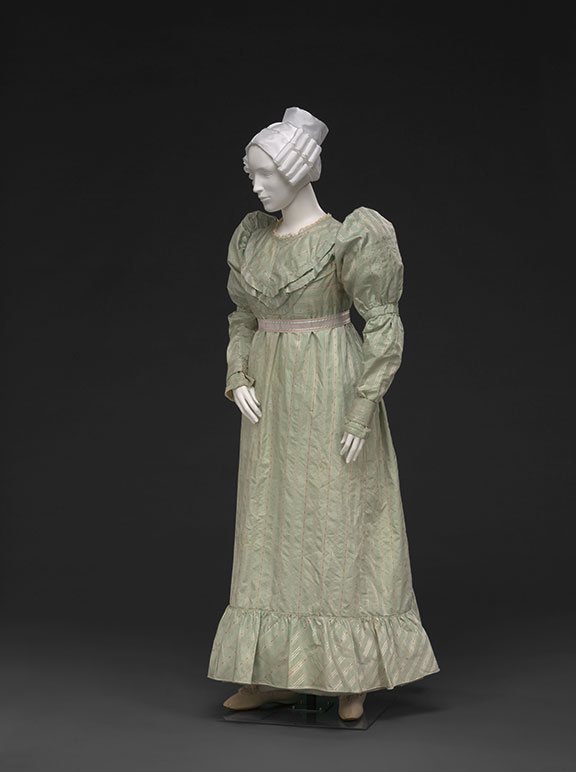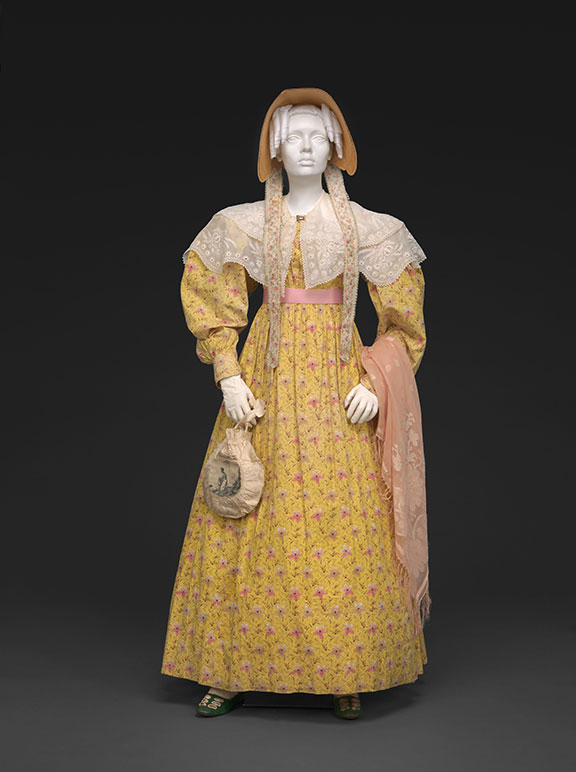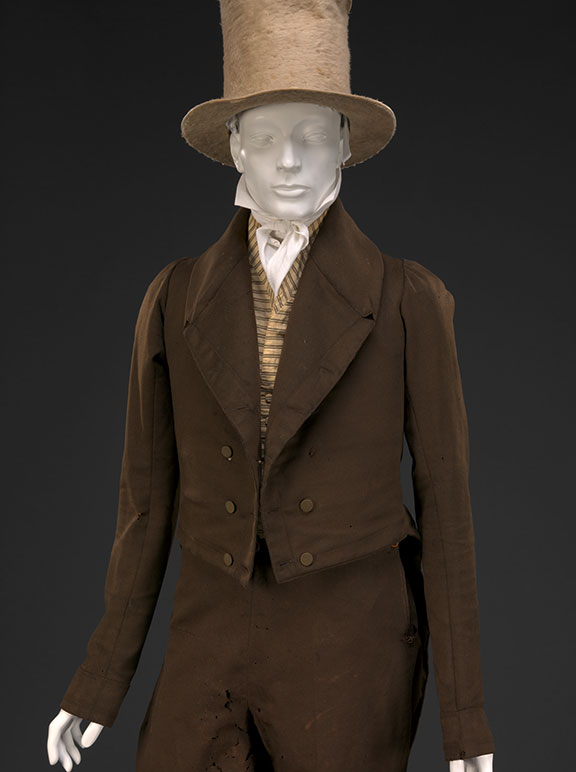Undergarments
1820s
Style: Soft fabrics and narrow skirts popular at the beginning of the century revealed every curve of the female form. Introduced about 1810, the “long stay” allowed clingy dresses to fit smoothly. The new style was hip length, made with two layers of sateen or jean, and included bust and hip gores. Instead of baleen, wooden, or cane boning, cotton cording provided shaping and bus support as needed. With minor variations in style (mostly allowing the bust and waist to gradually lower), this style of corset was worn through the early 1840s.
The petticoat was designed to give support to ever-widening skirts and create the A-line silhouette now in style. Corded petticoats, with rows of cotton cord inserted in channels of the skirt, created the desired bulk. In addition, down-filled silk sleeve puffs ties to the corset straps helped ensure that increasingly full sleeves displayed their maximum dimensions.
Cotton twill (“jean”) corset, cotton twill lining, cotton cording, metal eyelets, silk embroidery, brass busk, about 1830, 48.49.1, gift of Mrs. Alfred N. Abrams; cotton corded petticoat, 1824, 92.309.1, gift of Mrs. C.E. Woolley; sleeve puffs, silk filled with feathers, 2004.2.4, Friends of the Museum Purchase.





